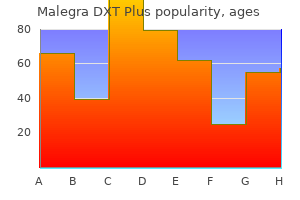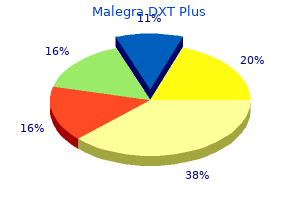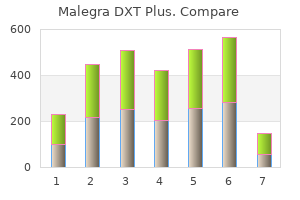"Order cheapest malegra dxt plus, erectile dysfunction surgery cost".
By: F. Emet, M.A., M.D., Ph.D.
Program Director, East Tennessee State University James H. Quillen College of Medicine
Combining these molecular biomarkers with massive screening may reduce the danger of overdiagnosis in lung cancer depression and erectile dysfunction causes buy generic malegra dxt plus canada. Further efforts are essential to totally notice and define widespread procedures erectile dysfunction medications otc buy malegra dxt plus without prescription, standards erectile dysfunction johannesburg discount 160 mg malegra dxt plus overnight delivery, and controls so as to translate valuable laboratory findings into clinically related procedures for sufferers with lung most cancers. Diagnostic assay based on hsa-miR-205 expression distinguishes squamous from non-squamous nonsmall-cell lung carcinoma. Screening for circulating nucleic acids and caspase exercise within the peripheral blood as potential diagnostic instruments in lung most cancers. Downregulation of cell-free miR-198 as a diagnostic biomarker for lung adenocarcinoma-associated malignant pleural effusion. Combination of protein coding and noncoding gene expression as a robust prognostic classifier in stage I lung adenocarcinoma. High expression of miR-21 and miR155 predicts recurrence and unfavourable survival in nonsmall cell lung cancer. Low miR-145 and high miR-367 are related to unfavourable prognosis in resected nonsmall cell lung cancer. Reducing the chance of overdiagnosis in lung cancer: a support from molecular biology. Circulating miR-22, miR24 and miR-34a as novel predictive biomarkers to pemetrexed-based chemotherapy in superior nonsmall cell lung cancer. Array evaluation for potential biomarker of gemcitabine identification in nonsmall cell lung most cancers cell traces. Restoration of tumour suppressor hsamiR-145 inhibits most cancers cell progress in lung adenocarcinoma sufferers with epidermal growth issue receptor mutation. Although lung cancer was traditionally thought to be a nonimmunogenic tumor unlike melanoma or renal cell most cancers,2 accumulating evidence suggests each mobile (T lymphocyte-mediated) and humoral (antibody-mediated) immune antitumor responses even in sufferers with advanced lung cancer. In fact, lung most cancers is among the many tumors that are known to promote immune tolerance and escape host immune surveillance. It is believed that the immune system actively inhibits the formation and development of transformed cells and in the end "shapes" nascent tumors by forcing the selective evolution of tumor cells that can evade the immune response, a phenomenon known as tumor immunoediting. Breathing new life into immunotherapy: evaluate of melanoma, lung and kidney most cancers. In addition to secreting immune-suppressive mediators, tumor cells may sign surrounding inflammatory cells to launch immune-suppressive mediators, increase the trafficking of suppressor cells to the tumor site, and promote the differentiation of effector lymphocytes to a T-regulatory phenotype. The increased T-cell apoptosis after mitogen stimulation is because of the inhibition of nuclear factor-B activation within the tumor milieu. An understanding of the complex points surrounding cancer immunosurveillance, immunoediting, the role of host mobile networks in lung tumorigenesis, and tumormediated immunosuppression will provide extra therapeutic opportunities in lung cancers. Tumor-associated B7H1 promotes T-cell apoptosis: a potential mechanism of immune evasion. Tumor-driven evolution of immunosuppressive networks during malignant progression. Endogenous T cell responses to antigens expressed in lung adenocarcinomas delay malignant tumor progression. Cutting edge: regulatory T cells from lung cancer sufferers instantly inhibit autologous T cell proliferation. Increased manufacturing of immature myeloid cells in most cancers sufferers: a mechanism of immunosuppression in cancer. Despite this discovering, spontaneous tumor regressions not often happen, indicating the power of the tumor cells to escape the immune response.
Epigaea repens (Trailing Arbutus). Malegra DXT Plus.
- How does Trailing Arbutus work?
- Urinary conditions, water retention, and other conditions.
- Dosing considerations for Trailing Arbutus.
- What is Trailing Arbutus?
- Are there safety concerns?
Source: http://www.rxlist.com/script/main/art.asp?articlekey=96261

Immunohistochemistry of Adenosquamous Carcinoma Although adenosquamous carcinoma is identified on the premise of morphologic options erectile dysfunction evaluation cheap malegra dxt plus 160mg with mastercard, immunohistochemistry is sometimes helpful for distinguishing the comparatively poorly differentiated components erectile dysfunction protocol jason cheap generic malegra dxt plus canada, together with strong adenocarcinoma and nonkeratinizing squamous cell carcinoma impotence male cheap malegra dxt plus 160mg online. Adenosquamous Carcinoma this tumor is characterised by the presence of each squamous cell and adenocarcinoma differentiations. The most typical presentation is a big peripheral mass, often in an higher lobe. Immunohistochemistry is helpful for highlighting the differentiation characteristics of the tumor cells. Various kinds of genetic alterations have been reported, but no particular mutations, rearrangements, and amplifications are present in this type of tumor. The prognosis requires a totally sampled resected tumor and could be made only on resected specimens and never in small biopsy specimens or cytology samples. The common patient age at diagnosis is around the seventh decade, and the male-to-female ratio is four:1 or 5:1, which lies between the ratios for squamous cell carcinoma and adenocarcinoma. It usually varieties a spherical tumor with well-defined borders, and it has a bulging, fleshy, homogeneous, quite sarcomatous look. Some large cell carcinomas resemble poorly differentiated adenocarcinoma or squamous cell carcinoma grossly. On histological examination, most giant cell carcinomas are composed of stable nests of polygonal cells with vesicular nuclei, prominent nucleoli, reasonably abundant cytoplasm, well-defined cell borders, and a scant fibrovascular stroma. If these elements are detected in a large cell carcinoma, their presence ought to be added in the histologic description. Carcinosarcoma Carcinosarcoma is a malignant tumor consisting of a combination of carcinoma and sarcoma containing heterologous elements similar to rhabdomyosarcoma, chondrosarcoma, and osteosarcoma. The prognosis of carcinosarcoma is difficult utilizing small biopsy samples, and immunohistochemistry could additionally be helpful for confirming clear epithelial and sarcomatous differentiation. This type of tumor may be referred to as the blastomatoid variant of carcinosarcoma. However, carcinosarcoma lacks the component of low-grade fetal adenocarcinoma and the primitive stroma of pulmonary blastoma. Pulmonary Blastoma Pulmonary blastoma is a biphasic tumor composed of low-grade fetal adenocarcinoma and primitive mesenchymal cells displaying varied levels of differentiation. Pulmonary blastoma and well-differentiated fetal adenocarcinoma contain missense mutations in exon three of the beta-catenin gene, which lead to activation of the Wnt pathway and aberrant nuclear localization of beta-catenin. Therefore, nuclear localization of beta-catenin is a unique diagnostic marker of pulmonary blastoma. Immunohistochemistry of Large Cell Carcinoma Large cell carcinoma is an undifferentiated carcinoma from the elements of both morphology and immunohistochemistry. Carcinoid Tumors Carcinoid tumors are thought to be derived from neuroendocrine cells known to exist in regular airways. An endobronchial element is discovered extra regularly in typical than in atypical carcinoids. As with other kinds of lung cancer, tumor unfold by way of lymphatics or the bloodstream could happen with metastasis in mediastinal lymph nodes, liver, and bones; as stated earlier, metastases are extra widespread in atypical than in typical carcinoids. Several progress patterns and a big selection of cell options have been described, together with, amongst others, spindle, mucinous, and clear cells. The tumor cells are often uniform in appearance with polygonal shape, finely granular nuclear chromatin, inconspicuous nucleoli, and scant to reasonably abundant eosinophilic cytoplasm. In general, atypical carcinoids show the identical histologic patterns as typical carcinoids. By definition, atypical carcinoids have 2 to 10 mitoses per 2 mm2 and/or foci of necrosis (often punctuate), whereas typical carcinoids show fewer than 2 mitoses per 2 mm2 and lack necrosis. Neuroendocrine neoplasms of the lung are ubiquitous tumors composed of malignant cells showing neuroendocrine differentiation and representing a large spectrum of scientific, biologic, and histopathologic features.

Twenty-three of the 30 most common causes of demise occurred more frequently in smokers; the rate ratio for lung cancer was 21 impotence research order 160mg malegra dxt plus visa. The increased mortality among people who smoke in contrast with never-smokers was primarily from illnesses similar to lung most cancers that might be attributed to tobacco smoking erectile dysfunction caused by supplements discount 160mg malegra dxt plus with amex. Among former people who smoke who stopped smoking permanently between the ages of 25 years and 34 years or between the ages of 35 years and forty four years erectile dysfunction young age treatment order malegra dxt plus, the respective relative dangers have been 1. The projected lung cancer-related deaths for 2015 are 187,000 for men and eighty five,204 for girls. However, these rates are growing throughout a number of Asian countries, including China, South Korea, and Japan. According to these knowledge, lung most cancers was the most common cancer in China total and in its city areas and the second most typical most cancers in its rural areas. These findings point out that lung cancer was the most common most cancers for males in all areas, notably urban areas, and second to breast most cancers in ladies, especially in urban areas. Lung cancer was the main cause of cancer-related deaths in all groups stratified by gender and area. Ages over 50 years have been the high-risk age groups due to the increase in incidence and mortality charges that accompany rising age. The relative extra risks for most cancers of the lung, head/neck, esophagus, small gut, liver, nasal cavities, bone/cartilage, soft tissue, brain and central nervous system, and thyroid and melanoma have been considerably decrease for girls. A meta-analysis of fifty five research of spousal smoking on the danger of lung cancer for a nonsmoking partner confirmed a pooled relative risk of 1. This affiliation has been replicated in numerous populations throughout Asia, Europe, and North America. Data from a evaluation of published studies over the previous 25 years showing geographic and gender variations in lung cancers in never-smokers. In a matched case�control study performed between 2002 and 2009, a quantity of epidemiologic components of lung cancer in never-smokers differed between men and women. For males, solely a household history of lung most cancers in first-degree relations was considerably associated with threat of lung cancer (odds ratio, 2. In addition, housing characteristics associated to poor ventilation, including single story properties, much less window area, absence of a separate kitchen, lack of a ventilator, and limited time with windows open, had been related to lung most cancers. For medium (20�29 pack-years) and excessive (40 pack-years or more) categories, the risk of lung cancer was similar for women and men. Most of the altered genes have been answerable for disturbances in G2/M transition and mitotic development, causally linked to tumorigenesis in these patients. The threat of death from lung cancer among male people who smoke appears to have stabilized since the 1980s, whereas it continues to enhance among female people who smoke. For girls aged 60 years to 74 years old, the all-cause mortality price is now at least three times as high among current smokers as among never-smokers. Some studies have shown a greater risk of lung cancer for feminine people who smoke than for male people who smoke. Data generated by the American Health Foundation database indicate that the odds ratio for the major lung cancer types is constantly larger for women than for males at every level of exposure to cigarette smoke. A Canadian case�control examine of gender variations in lung most cancers from 1981 to 1985 confirmed that with a 40-pack-year smoking history (compared with lifelong nonsmokers), the odds ratio for the development of lung cancer was 27. In a pooled evaluation that included thirteen,169 instances and 16,010 controls from Europe and Canada, the percentages ratio for various histologies of lung cancer was assessed. For male present smokers (average of 30 cigarettes per day), the percentages ratios have been 103. Manhattan plot based mostly on p values derived from 1-degreeof-freedom tests of genotype development effect in unconditional logistic regression analysis adjusted for study, age, and three eigenvectors in a genome-wide association research of lung cancer in never-smoking Asian girls (5510 with lung most cancers and 4544 controls).

In this chapter we describe the pathologic options of the most important types of lung most cancers and the diagnostic tools obtainable for his or her analysis impotence mental block purchase 160mg malegra dxt plus mastercard, with particular emphasis on the challenges concerned in classifying lung most cancers utilizing small tissue biopsies and cytology specimens erectile dysfunction at age 25 purchase malegra dxt plus 160 mg line. However impotence massage malegra dxt plus 160 mg low price, more just lately, with the use of new therapeutic strategies and molecular diagnostic testing, it has turn into imperative to provide a more particular diagnosis of lung most cancers, and the histologic subtypes should be part of the pathology report. The mortality associated with this illness is high primarily as a result of most lung cancers are identified at superior stages, when choices for therapy are mostly palliative. Accurate pathologic classification and prognosis of lung cancer are essential for sufferers to receive applicable remedy. From pathologic and biologic perspectives, lung cancer is a highly complicated neoplasm with several histologic varieties. Lung tumors are the outcomes of a multistep process during which regular lung cells accumulate multiple genetic and epigenetic abnormalities and evolve into cells with malignant biologic capabilities. In this new paradigm for lung cancer, making a exact pathologic analysis and correctly handling tissue and cytology samples for molecular testing are becoming more and more essential. This new classification of adenocarcinoma outlined many paradigm shifts that affect clinical diagnosis and management and open new avenues for analysis. This publication was a multidisciplinary effort rather than one primarily addressed by pathologists; clinicians, radiologists, molecular biologists, and surgeons were concerned. This collaboration led to an emphasis on correlations between pathology and clinical, radiologic, and molecular characteristics. In addition, the consultants recognized that 70% of patients with lung most cancers present with advanced-stage disease, which is often recognized based on small biopsy and cytology specimens. This time period had been used for no less than five completely different entities with disparate medical and molecular properties, leading to nice confusion in routine scientific care and analysis. The time period mixed subtype was discontinued, and invasive adenocarcinomas were categorized according to their predominant subtype. Using this approach, the proportions of every of the histologic subtypes ought to be estimated in a semiquantitative method and a predominant sample designated. Micropapillary adenocarcinoma was introduced as a serious histologic subtype as multiple research have proven that patients with such tumors have a poor prognosis. Finally, clear cell and signet ring adenocarcinomas were discontinued as main subtypes as a result of they characterize cytologic features that can happen in a quantity of histologic patterns of adenocarcinoma; however, now these features may be recorded when any amount is present. Studies from Australia,17 Europe,19 Asia,18 and North America have demonstrated that the proposed subtyping has prognostic worth. This proposal was supported by retrospective observational research in tumors measuring either 2 cm or much less or 3 cm or less. Examples of invasive lung adenocarcinoma patterns: (B) acinar; (C) lepidic; (D) papillary; (E) micropapillary; and (F) strong with mucin. Both lesions also wants to have a discrete circumscribed border without miliary spread of small foci of tumor into adjacent lung parenchyma and/or with lobar consolidation. These tumors typically encompass a posh, heterogeneous mixture of histologic patterns, thus explaining the former class of adenocarcinoma, blended subtype. Comprehensive histologic subtyping is performed by making a semiquantitative estimation of every of the patterns in 5% increments. This method may also provide a foundation for architectural grading of lung adenocarcinomas. Invasive adenocarcinoma is present in no much less than one focus measuring more than 5 mm in biggest dimension. Invasion is outlined as follows: (1) histologic subtypes aside from a lepidic pattern. Several recent research of early-stage adenocarcinomas printed since 2011 have demonstrated that lepidic predominant tumors have a positive prognosis, with 5-year disease-free survival charges of 86% to 90%.
Generic 160mg malegra dxt plus with amex. Encore Vacuum Therapy for Erectile Dysfunction.

